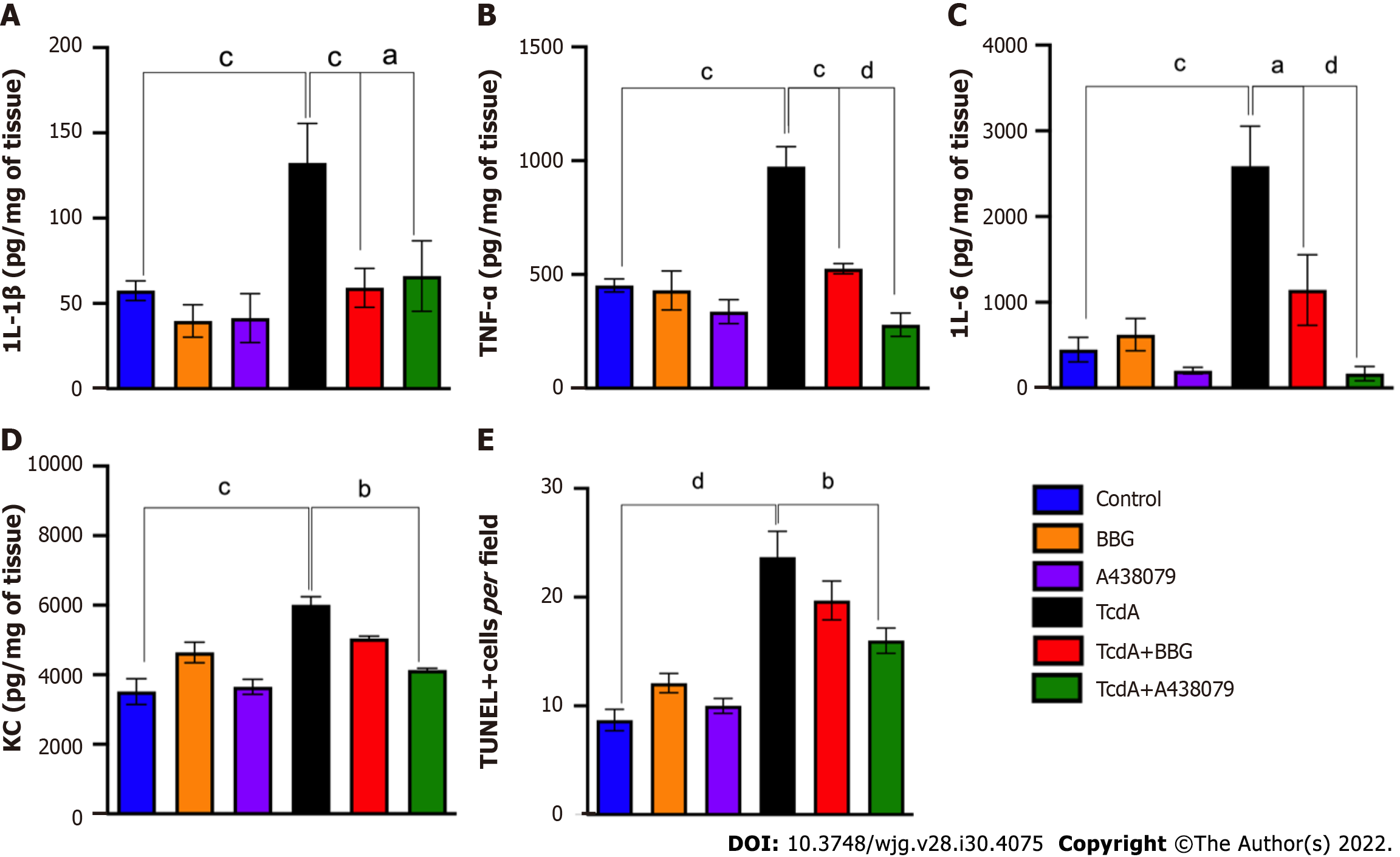Copyright
©The Author(s) 2022.
World J Gastroenterol. Aug 14, 2022; 28(30): 4075-4088
Published online Aug 14, 2022. doi: 10.3748/wjg.v28.i30.4075
Published online Aug 14, 2022. doi: 10.3748/wjg.v28.i30.4075
Figure 4 P2X7 receptor inhibition abrogates Clostridioides difficile toxin A-induced inflammation and cell death in mice.
A-D: The levels of interleukin (IL)-1β (A), tumor necrosis factor-α (B), IL-6 (C), and keratinocyte chemoattractant (D) in the ileal samples of TcdA-unchallenged [control, Brilliant Blue G (BBG), and A438079] and challenged (TcdA, TcdA + BBG, and TcdA + A438079) mice measured by ELISA (n = 5); E: The number of TUNEL+ cells per field in the ileal samples of TcdA-unchallenged (control, BBG, and A438079) and challenged (TcdA, TcdA + BBG, and TcdA + A438079) mice. The data are expressed as the mean ± standard error of the mean. ANOVA followed by Tukey’s test was used (aP = 0.03; bP = 0.01; cP < 0.008; dP < 0.0001). IL: Interleukin; TNF: Tumor necrosis factor; BBG: Brilliant Blue G; KC: Keratinocyte chemoattractant; TUNEL: Terminal deoxynucleotidyltransferase-mediated dUTP-biotin nick end labeling.
- Citation: Santos AAQA, Costa DVS, Foschetti DA, Duarte ASG, Martins CS, Soares PMG, Castelucci P, Brito GAC. P2X7 receptor blockade decreases inflammation, apoptosis, and enteric neuron loss during Clostridioides difficile toxin A-induced ileitis in mice. World J Gastroenterol 2022; 28(30): 4075-4088
- URL: https://www.wjgnet.com/1007-9327/full/v28/i30/4075.htm
- DOI: https://dx.doi.org/10.3748/wjg.v28.i30.4075









